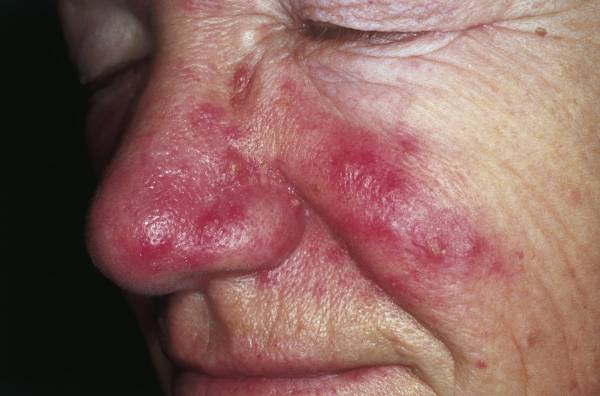Content deleted Content added
MrOllie 229,518 edits |
m Tags: Reverted Visual edit |
||
Line 128: Evidence for the use of laser and intense pulsed-light therapy in rosacea is poor.<ref>{{cite journal |last1=van Zuuren |first1=EJ |last2=Fedorowicz |first2=Z |last3=Carter |first3=B |last4=van der Linden |first4=MM |last5=Charland |first5=L |title=Interventions for rosacea. |journal=The Cochrane Database of Systematic Reviews |date=28 April 2015 |volume=2015 |issue=4 |pages=CD003262 |doi=10.1002/14651858.CD003262.pub5 |pmid=25919144|pmc=6481562 }}</ref> === LED Mask === ===== General Information ===== LED therapy, particularly involving red light (633nm), has been recognized for its therapeutic potential in dermatology. This non-invasive treatment modality uses specific wavelengths of light to target different skin issues, with red light noted for its anti-inflammatory properties. These properties are beneficial in reducing redness and swelling associated with Rosacea. ===== Mechanism of Action ===== LED therapy works by penetrating the skin and triggering biological processes that aid in skin rejuvenation and healing. Red LED light, in particular, is known to improve skin barrier function, stimulate collagen production, and reduce inflammatory markers, which are crucial in managing Rosacea symptoms. ===== Treatment Procedure ===== The treatment involves exposure to LED light, typically through a mask, which emits the therapeutic light directly onto the facial skin. The frequency and duration of the treatment sessions can vary, but the procedure is generally convenient and suitable for regular use. ===== Safety and Efficacy ===== LED masks are considered safe for most individuals, with minimal side effects. The treatment is especially suitable for sensitive skin, a common concern in Rosacea. Studies and clinical applications have shown that LED therapy, including red light therapy, is effective in managing various dermatological conditions, suggesting its potential benefit in Rosacea treatment.<ref>{{Cite journal |last=Ablon |first=Glynis |date=2018-2 |title=Phototherapy with Light Emitting Diodes |url=https://www.ncbi.nlm.nih.gov/pmc/articles/PMC5843358/ |journal=The Journal of Clinical and Aesthetic Dermatology |volume=11 |issue=2 |pages=21–27 |issn=1941-2789 |pmc=5843358 |pmid=29552272}}</ref> ==== Personal Experiences and Anecdotal Evidence ==== While clinical studies and scientific research are crucial for understanding the effectiveness of LED mask treatments for Rosacea, personal experiences and anecdotal evidence can also provide valuable insights. For instance, a blog post on Silkemyk discusses individual experiences with using an LED mask for treating conditions like acne, Rosacea, and psoriasis. These accounts offer a user perspective on the practical application and potential benefits of LED therapy in everyday settings. It's important to note that such personal experiences, while informative, do not carry the same weight as clinical studies and should be considered as supplementary information. They provide a more subjective view of the treatment's effectiveness and user satisfaction.<ref>{{Cite web |date=2021-11-24 |title=Treatment with an LED mask against acne, rosacea and psoriasis |url=https://silkemyk.uk/blogs/skincareblog/treatment-with-an-led-mask-against-acne-rosacea-and-psoriasis |access-date=2024-01-03 |website=Silkemyk |language=en}}</ref> == Outcomes == | |||
 Article Images
Article Images